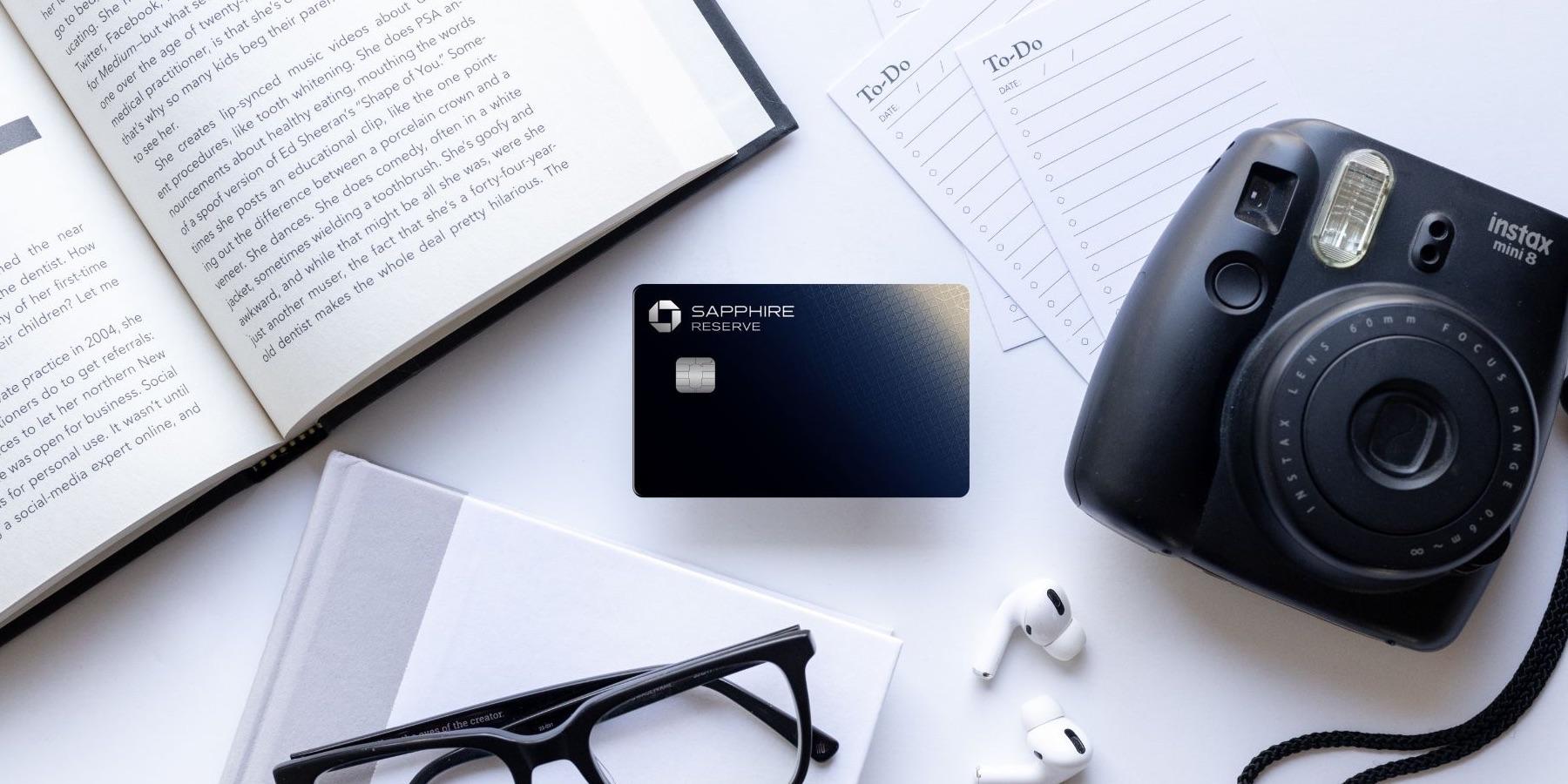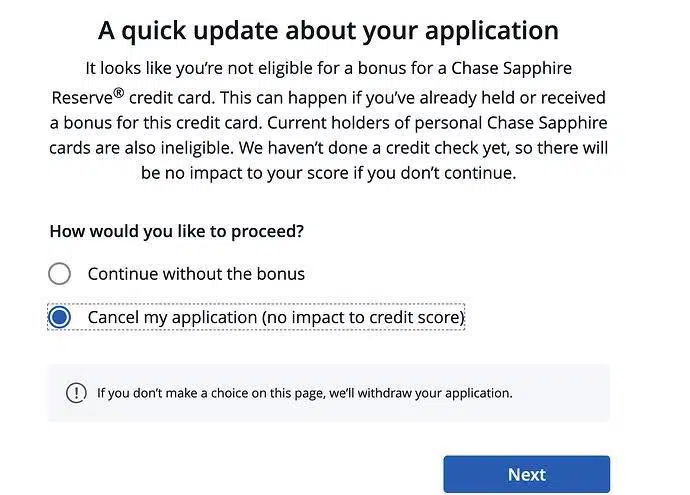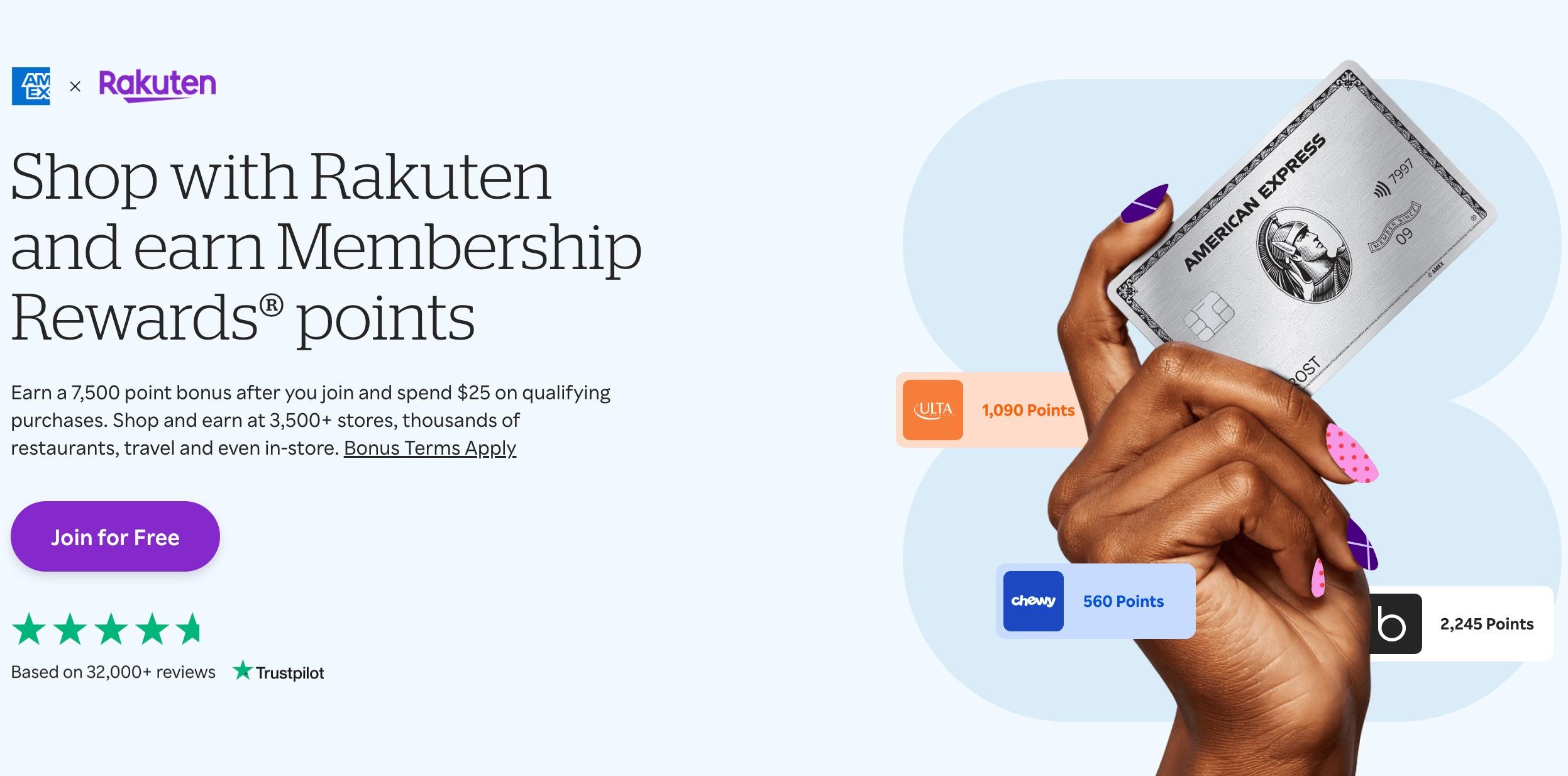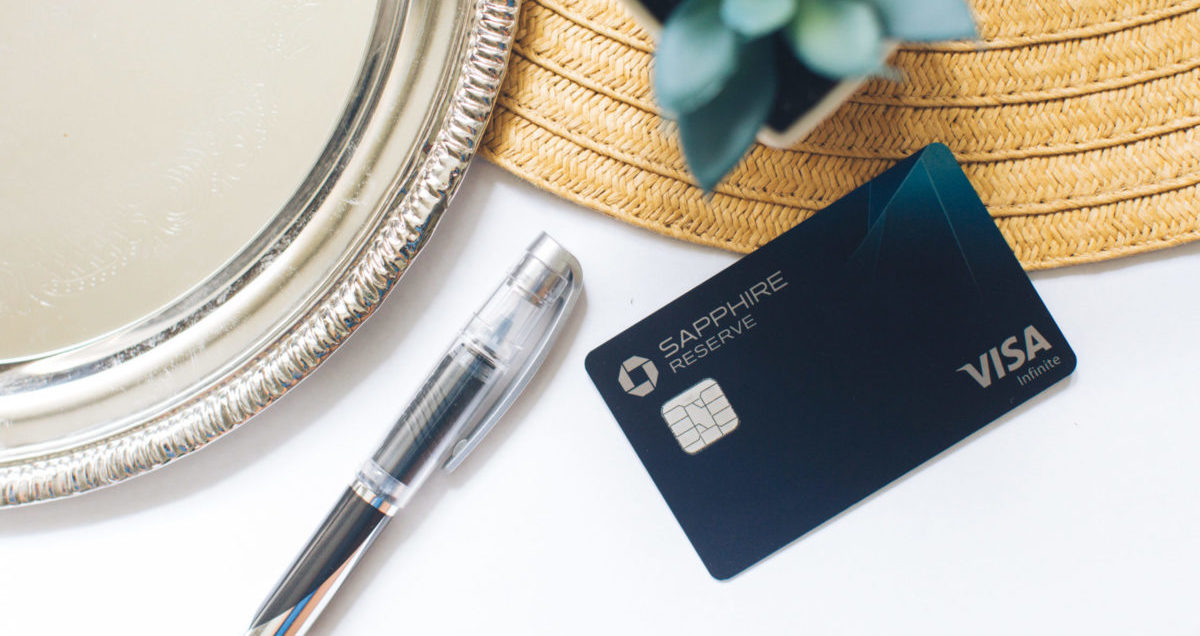The launch of the Chase Sapphire Reserve® nearly a decade ago practically broke the internet: a premium Chase travel card with an unprecedented six-digit welcome bonus that caused such a stampede of applications that the bank briefly ran out of the metal it used to make the card.
Its relaunch this summer – upping to a $795-a-year annual fee with an American Express-like series of money-saving travel credits – hasn't made quite the same splash … and not just in comparison to its 2016 debut, but to the almost-overwhelming praise travelers have heaped on Amex's recently revamped (and even more expensive) flagship card, The Platinum Card® from American Express.
Chase has repeatedly insisted that the summer relaunch of its top travel card has been a smash hit, saying it has seen an uptick in demand for the card. Yet there are several signs that the new-look Reserve Card isn't resonating nearly as well with travelers, including:
- Just three months after launch, Chase tweaked one of the card's marquee new benefits for luxury hotel stays last week and even added another, one-time $250 sweetener for next year. That kind of quick turnaround is unprecedented for premium travel cards.
- Hoping to recapture the magic from 2016, the card hit the market in June with what Chase called its biggest limited-time bonus ever: 100,000 points, plus an additional $500 travel credit. But less than two months later, the bank changed that to a flat 125,000-point welcome bonus – an even better offer in the eyes of many diehard travelers. Again, that's unusual for a new product launch.
- Asked by investors about the initial response to the new card a few weeks into the rollout, J.P. Morgan Chase Chief Financial Officer Jeremy Barnum responded with a somewhat tepid “Going fine. We're happy,” … while CEO Jamie Dimon interjected: “So far.”
Get more of the biggest news in award travel and credit cards in your inbox every week – sign up for our free Extra Mile newsletter!
Chase executives say those recent tweaks are not evidence that their new flagship card is faltering but rather proof that the bank is willing to quickly pivot to make it even better for current and future cardholders.
“We’re very, very happy with the way that the market has responded to the card. This is a never-ending process,” Sam Palmer, the general manager of Chase Sapphire, said in an interview last week while explaining the bank's change. “We want to make sure that the credits we bring to our clients are easy, and easy to redeem.”
Still, it's undeniable: There's an energy around the Platinum Card's recent updates that remains notably absent for the Reserve Card – at least among the points and miles-obsessed sickos who read (or write) sites like this one.
So what gives?
Chase Forgot to Boil the Water First
There's an old allegory you've probably heard about the importance of introducing big changes gradually that seems instructive here. Hang with me, because it involves … a frog:
Throw a frog into a pot of scalding water, and it'll jump right out. But put the frog in the pot first, and it won't notice as the water eventually warms to a boil.
American Express has spent the last decade boiling the frog, steadily introducing more credits for travel, dining, and shopping over time to more and more of its travel cards … to the point that most longtime Platinum cardholders celebrated last week's unveiling of an $895-a-year card with more than a dozen different use-them-or-lose-them statement credits.
In its rush to copy pieces of that lucrative playbook with its own premier Sapphire card, Chase forgot to throw the frog in first. While pushing the card's annual fee from $550 a year to $795 this summer, Chase added a slew of benefits – some easier to use than others:
- There's now $500 in credits a year toward luxury hotels and resorts in Chase's “The Edit” portfolio, split into two $250 chunks … that require at least a two-night stay. Just last week, Chase made a significant update to that benefit: instead of being available once in each half of the year, cardholders can use them back-to-back starting in 2026.
- There's also a new $300 dining credit with a similar, twice-a-year structure … but it's currently only eligible at 300-plus restaurants in 25 or so major U.S. cities
- Ditto for a new $300 credit toward tickets on StubHub
- There's still the usual monthly credits of $10 for Lyft and two $10 credits for non-restaurant Doordash orders, plus another $5 off monthly restaurant orders
Read more about all the recent changes to the Sapphire Reserve Card!
At the time, Chase billed those benefits, new and old, as substantial and easy to use – not, as a Chase executive previewing the card changes said (in a not-so-subtle dig at its primary competitor), “12 credits of a small amount.” But even if Chase didn't fully embrace that piecemeal Amex model, it's an open question of whether Chase customers were willing to move that way at all.
At its core, the average American Express and Chase customer may just be drastically different.
While they may still gripe about the “Extreme Couponing” mentality required to use their cards, American Express has conditioned its customers to expect it – especially the younger Millennials and Gen Zers the bank is increasingly courting. Odds are, they've never known a world without tracking which monthly or quarterly benefit to use next.
The value proposition for Chase's top Reserve Card was always simpler. A lower annual fee with an incredibly easy-to-use $300 travel credit right off the bat. Second-to-none travel insurance built right into the card. A great card to swipe (almost) everywhere, earning a flat 3x points on all dining and travel purchases.
But now, Chase is clearly borrowing a page from Amex's playbook: forcing cardholders trying to use their benefits into its own ecosystems and branded partnerships with companies like Stubhub and Peloton. So while the bank can tout $2,700-plus in credits, are those hoops Sapphire Reserve cardholders really want to jump through?
A Pair of Painful Cuts
Perhaps the most surprising aspect of the Amex Platinum Card's recent update was what was lost: nothing.
While loading up that card with even more credits and perks, American Express didn't remove or even adjust any of its existing benefits. In contrast, Chase made some changes that might have rubbed longtime Reserve cardholders the wrong way.
- Rather than doling out 3x points per $1 spent on any travel purchase – be it a plane ticket, an Airbnb stay, or Uber ride – the card now earns 4x points on flights and hotels booked directly
- It's also sunsetting the flat, 1.5-cent-per-point redemptions Reserve cardholders get when booking any and all travel through the Chase Travel℠ portal in favor of a new “Points Boost” feature to get up to 2 cents apiece, but only on select premium cabin redemptions and luxury hotels
Chase has said the initial response to the expansion of Points Boost has been enormous as the company leans into the ongoing premium travel boom. But for travelers who prized the flexibility to take any cheap flight, hotel, or rental car and make it free using fewer points, there's only downside.
Bad Timing & Mixed Messaging for Application Rules
Timing is everything in travel credit cards. That's true whether you're trying to open a new one when there's a big bonus or, as it turns out, when you're a bank relaunching a credit card.
Just months before unveiling the new Reserve Card, the bank rolled out a 100,000-point welcome bonus on the Chase Sapphire Preferred® Card – matching a record-high bonus on its entry-level travel credit card for the first time in four years. Thousands of travelers rightfully jumped at the opportunity to earn 100,000 of the most valuable points in travel.
But unknowingly, they also made themselves ineligible to earn a bonus on the pricier Reserve Card. That meant the pool of potential Reserve applicants shrank as a result. Travelers who might have been thrilled to get the Reserve Card were left frustrated instead.
Whether that was inadvertent or intentional, that frustration was compounded by some mixed signals about who might be able to get the card.
The bank initially inspired hope by confirming it would drop its longstanding “one Sapphire card” limit, allowing travelers to open and hold the Chase Sapphire Preferred® Card and the new Chase Sapphire Reserve® simultaneously. Better yet, executives hinted that they'd soften bonus eligibility requirements – including a 48-month window between earning bonuses on both Sapphire Cards. But ahead of the big launch, they didn't share specifics.
When the revamped card finally hit the market in late June, many travelers jumped at the chance to get the newest premium travel credit card with a 100,000-point bonus only to see the same result: No bonus for you.
Despite the initial signals, Chase has actually made it harder. While some ironclad policies that blocked would-be applicants from getting the card have fallen away, the bank added additional terms that block even more from earning a bonus … and thus removed a key incentive to get the card at all.
Or maybe they didn't. It's hard to tell, as Chase has remained tight-lipped about their application rules. And that's part of the problem: No one really knows whether they've got a shot at opening the card or not.
Fortunately, Chase rolled out a new pop-up notification system – another Amex move – that warns applicants whether they're eligible for a bonus or not, allowing them to exit the application before proceeding. But alongside stricter bonus restrictions and the Chase Sapphire Preferred promotion just a few months earlier, that meant many prospective cardholders simply moved on.
What Chase Has Going for It
The premium travel credit card war isn't lost. From the points to the perks, there's a lot to love about the Reserve Card and the broader Ultimate Rewards ecosystem.
With standout transfer partner options like Hyatt, Chase points remain among the most valuable in the world of travel. While it came at a cost, the introduction of Points Boost redemptions for premium cabin flights and top-rated hotels adds an interesting new option to get even more value.
The Sapphire Reserve Card's $300 annual travel credit is one of the best, most valuable, and easiest-to-use benefits on any travel card, period. Charge any travel expense – a flight, hotel, rental car, excursion, or even parking fee – to your Reserve Card and it'll kick in to wipe up to $300 off your statement each year. Right off the bat, that alone automatically reduces the $795 annual fee to something like $495 a year.
Chase also puts American Express to shame by giving cardholders a reason to keep reaching for their Reserve Card: Better spending category bonuses than you'll find on most other premium travel cards. While you'll earn just 1x point per $1 spent on the Amex Platinum Card on everything but airfare and some hotels, Chase is much more generous with doling out extra points – especially with 3x points on dining.
But perhaps Chase's biggest win is in the ongoing airport lounge wars, where Chase has put every bank to shame by rapidly building out a network of eight Sapphire Lounges, with special access for Reserve cardholders. These are beautiful spaces with excellent food and drinks all available at virtually any seat – plus, some special amenities like wellness rooms and shower suites.

At the same time, Amex Centurion Lounges – long regarded as the best in the world – have taken a clear step back due to long lines out the door and declining standards inside.
Bottom Line
Back when Chase first unveiled the new Sapphire Reserve Card, it seemed like a sure winner. Three months later, it feels underwhelming.
While executives say everything's going according to plan, tweaking a marquee benefit and adjusting the welcome bonus within the span of just a few months is unusual. Maybe it's recency bias. Maybe Chase is simply making proactive moves to undercut a competitor. And heck, maybe Chase doesn't actually want the business of points-obsessed travelers who read sites like this one.
But it sure feels like the Platinum Card from American Express has taken the wind out of Chase's sails.









Dowgraded to Preferred and got Freedom Unlimited. Now I am racking up miles way faster than any CRS holder.
I’ve heard the complaints from cruise users about not being able to get 3x points on cruises, but it took me a while to figure out you now get only 1x points with ANY vacation that anyone but you puts together — Backroads, Overseas Adventure Travel, Smithsonian — they’re all down to 1x. That’s a huge cut for me. I’m leaning toward moving to other cards now.
Agree on this article’s analysis. CSR is a really like down. Last year, it has already started to deteriorate the card like loosing instantcart credit, and losing restaurant-access of priority pass program. Now, the additional benefit (“coupons”) do not validate the additional $200 AF for sure. Ever worse, may I say teh $25 doordash monthly credit is a shame to the user: $5/mon for restaurant order and 2 $10/month for grocery order. I feel ashamed to use it and you bet, with markup price, fee here and there (unless you accept larger enough ($36?) of mark-up price, and tip, your $10 credit earn you almost nothing. That’s used it a few times and then stopped. Good luck, CSR. Maybe you want to kick out the frugal cardholders and welcome those millionaires. That’s fine. Do it and see if you can earn enough revenue there.
The answer to your question is an unqualified yes. They know they screwed up. They changed the fundamentals of the card dramatically while at the same time giving you credits that are nearly impossible to use. Amex saw what they did, salivated for the entire summer, and then launched a product that was designed to rub salt in its competitors self inflicted wound. The $250 one time only 2 night stay IHG credit, announced right before Amex’s launch, was a pathetic attempt to recapture the magic it lost. If you’re going to cast your lot with Holiday Inn Express (which is how most Americans know IHG) and Southwest A-list status, what is the ethos of this card anymore? It sure doesn’t smell premium.
This card was never what Chase wanted it to be. From early days way too many people signed up for it when they really just wanted to target their HNWI customers. So nearly a decade later they took a weed whacker to the card. OK fine – but where’s the credits for JPM and Chase Private Client (even Citi figured that no brainer out). Where’s the promotion of its banking services? Where are the real benefits for spending $75k on the card – $500 on Southwest? Yikes.
Heads should and will be rolling at Chase over this.
We’ve been chase holders for years. Can’t beat the Ultimate rewards transfer of points. I drive my wife nuts because we use this card for this,and that card for that. We transfer the points to the reserve and reduce our travel cost. We live in rural America. We can’t use most of the new benefits. We are losing a lot while getting an extra fee. I’ll be watching carefully over the next year or two (as we used our earned points) to see if it’s still worth it for us, but I’m thinking no.
Was considering ditching AmEx before either of the upgrades was announced, but given crappy Chase changes and incremental, but quite valuable upgrades from AmEx, the tables have turned.
I hate it and would ditch if I could still do something with all my points but I won’t use points until after I use my travel credit. All the “benefits” requiring 2 night hotel stays are not a fit with my kind of travel plans.
The primary reason that I was able to justify the CSR card was for the 3x points on all travel. Probably 60% of my purchases was for cruises. Now the card mostly collects dust except for buying airline tickets every now and again.
The picture of the Chase Sapphire Lounge in Boston is lovely but when I was there it was woefully overcrowded.
Well said. I loved all of Amex Platinum’s changes and now am considering a downgrade from the Reserve. I am a Hyatt Globalist and cherish the points transfer with Chase, but more and more, it seems like booking on points deals rather than loyalty is the way to go every time.
Platinum’s coupons are simply easier to use, CSR’s $300 credit notwithstanding.
Resy has multiple thousands of restaurants – 10k in the US alone. Chase Dining, as referenced above, has 300. The quarterly structure of the Resy is slightly worse, but I can drive 10 minutes in my suburb and drive past a half dozen. I’d need to drive 45 minutes to find a Chase Dining spot.
Stubhub is likewise strictly worse in every sense than the Platinum’s rough competitor entertainment credit. Nearly everyone has a streaming service, most of which are in the entertainment credit, whereas there are tens, if not hundreds of millions of people who go years without paying to see a live show. Plus Stubhub is miserably overpriced with junk fees on top of junk fees.
And finally, the Amex hotel credit is much more flexible, allowing for one night bookings to make better use of the credit. It takes a bit more planning with the fact that it resets semiannually, but being able to string back-to-back without a two-night minimum a la Chase is a huge win.
Lyft sucks and the Doordash garbage is filled with too many goofy caveats to make either worth more than zero. Uber is again strictly better because it is remarkably easy just to place a $15 restaurant pickup every month to make the benefit somewhat worthwhile.
Plus Amex has the very useful Lulu benefit, airline fee, and WM+, not to mention the superior lounge collection. No contest even with $100 higher marginal annual fee.
Chase simply has too many more niche credits and/or credits that are too difficult to use. Even with the changes they’ve already announced ($500 hotel goes to any time not just semiannual + the $250 IHG credit), it’s still too difficult to use. If Chase again changes the hotel to just a straight $500 credit, not split into two separate bookings, I’d consider them roughly equal in value. But unless and until they do something like that, Plat is an easy, runaway winner in terms of overall value for annual fee.
Seems to me they spent too much on their marketing team and not enough on market research determining how or if people would actually keep the card for the benefits.
I will be downgrading my CSR in November/December when the AF hits. The loss of 3x travel completely destroyed the value for me. I also have the AmEx Plat, so that’s what I use for airlines. The 4x hotel is nice, but I use points a lot of the time to book hotels, so that potential value is dwarfed by the loss of 3x cruises, tours, car rental, airport parking, etc. Total whiff by Chase. I’d keep it even with the harder to use added coupons if they just kept 3x travel. I’ll just swallow the 2x travel on CSP so I still have a way to transfer points to Hyatt (I also have a FU with 1.5% all categories that I transfer to my CSR account). By contrast, I was able to get $475 in credits from AmEx Plat on things I would use (nice restaurant, running shorts from Lulu, and $300 off an FHR booking I needed to make for a repositioning flight next May).
I had the sapphire pref for years, and downgraded to apply for the new reserve.
was actually rejected in my application process, not for reason of credit score or anything liek that but because I had previously received a sapphire preferred bonus (over 5-6 years ago)
since then i’ve moved onto to amex which is hadnt had before and am still debating on undoing the downgrade from chase sapphire pref.
they lost a customer that uses their banking and has other chase credit cards. giant fail.
The biggest issue with Chase is the “please hold” to existing card members with new benefits not activating until October, 4 months later.
Meanwhile Amex gave me $500 in value the next 48 hours!!
I just canceled mine, as my primary spend every year was cruises. They used to earn 3 points per dollar; now they earn 1. And for that, I’d be asked to pay $990 per year (with a user) when I was paying $625 previously.
Giving me a Stubhub credit doesn’t offset the above. Epic fail.
I think clearly the 3x on travel with 50% rebate was clearly a money loser for them. Lots of stories of people putting 30k Airbnb and cruises on the card. Chase has the data and they know flights and meals are doable at 3-4x. Certainly it will be a work in progress for them. I think a HUGE miss on their end was not somehow linking this to private client or JPMPC which they are trying to beef up on their banking side. Make a lower AF or some extra credits or something. Huge miss on their end with that.
I agree on your last point. They did eventually get me into their Private Wealth, but didn’t start really reaching out until after I’d had the card for 6-7 years.
the boiling frog parable is not based in reality. The frog will jump when water gets too hot.
Yes, we’re aware.
Thank you for a relatively well balanced article and evaluation. I was one of the first adopters of the Chase Sapphire Reserve (mid 2016 maybe?) and regularly spent $35,000 to $40,000 a year on it (easily $300,000 during the ~9 years I had it) . I was excited about the new card (and bonus) until I learned that Chase had changed the 48th month rule and now it was LIFETIME limit. It seemed so petty for them to do this do decent spenders like myself. With this in place I had no desire to re-up for $795/yr and have switched back to Amex (better overall value). Bye, bye Chase!!
I should still have one more year at the old $550 rate, to be billed on or about October 1. Hopefully, i can still use “pay yourself back” to pay the fee. Regardless, I will keep my Sapphire Reserve membership for one more year; and that is it. I do not find the new suite of benefits enticing at all.
This is great article. It’s possible that I’m saying that because it confirms what I already believed, but great, nonetheless. I just got the Reserve card in March, and I figured I was locked in on everything that I needed. I am lucky enough to have the USBank smartly card with 4% cash back, but I valued the 3% travel a bit higher. Without that, it’s a net loss of value for me, even before the price increase. I ran the numbers through https://www.asksebby.com/articles/chase-sapphire-reserve-calculator, and came up with a total value of $605. This is such a dramatic contrast with Amex. I just got the Amex Platinum Card. I figure that I’m locked in on everything I need, now.
Closed mine after nearly a decade. Would have signed back up but I was “ineligible” for the bonus. Time to ditch private client also because it’s worthless. Bye bye chase!
Why did they think someone in this spending range is going to want to be a coupon clipper?
Losing the 50% travel redemption bonus and the lower per dollar earning rates for what, random hard to redeem credits to restaurants I don’t want to eat at?
It’s not just a devaluation, it’s a disconnect from the prestige the card used to represent.